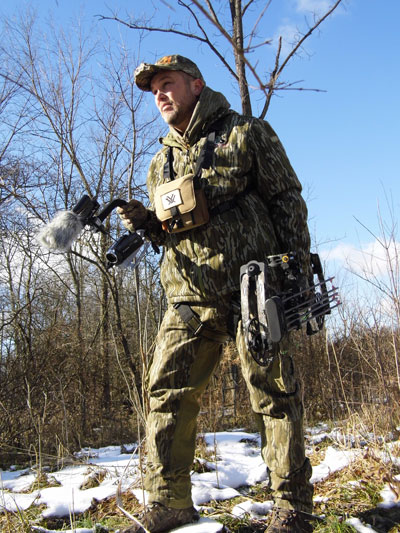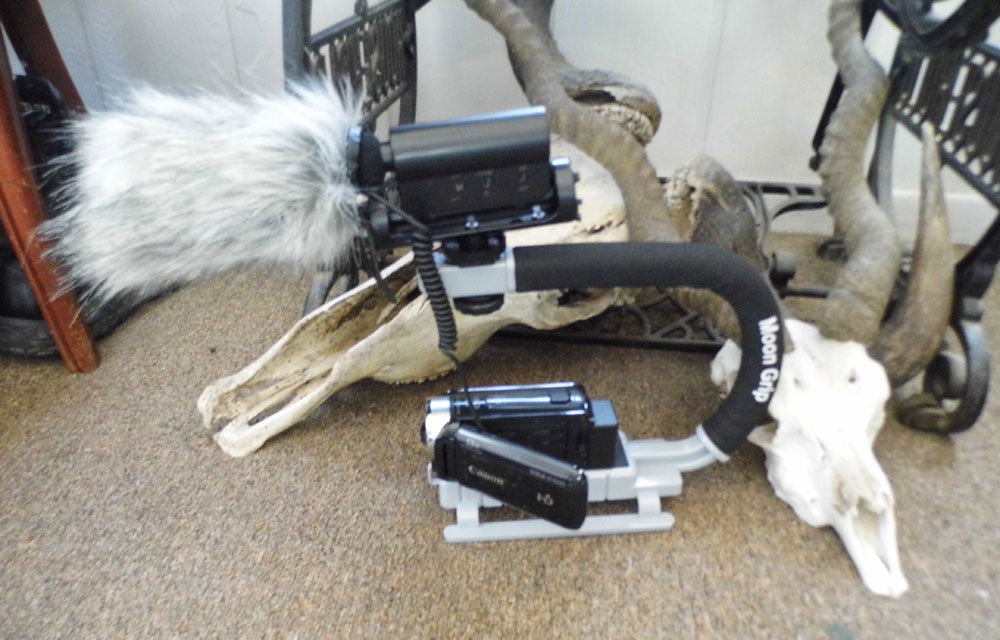provided by John E. Phillips
Steven Reinhold of Nova, Ohio, has been on the Mossy Oak ProStaff for 15 years and has a TV show on the Hunt Channel titled, “True Life Hunting Adventures,” on My Outdoor TV. Reinhold started out in the TV business in 2008. “I eventually dropped out of that business because my children were growing up and going to college, and I didn’t want to miss any family time,” Reinhold explains. Then in 2018, Reinhold’s older son, Mason Reinhold, wanted to get back into the TV business, so they cranked it up then.
A growing number of hunters throughout the nation are self-filming their hunts to run on some of the YouTube channels and networks that are devoted to hunts and hunters that you may not see on the larger television networks. Putting more hunts and fishing shows on networks like the Hunt Channel has been a trend in recent years. More sportsmen are filming their hunts to have videos to attract sponsors, and then those outdoorsmen can afford to put their TV shows on some of the major outdoor TV channels. You can see a surprising number of outdoor shows on a wide variety of YouTube channels. The number of viewers watching these shows appears to be growing. Mossy Oak has begun to show more of its shows on its Mossy Oak GO app, YouTube and other social-media channels and has begun to develop original content for these.
 My number-one camera is a Canon Vixia HF G20, a small, high-definition camera. My son is a welder, and he’s made an arm for this camera that he calls a Phantom Arm that he’ll be introducing in the 2021 season. The Phantom is all aluminum, and you can put the base of the camera on the tree when you set up your tree stand.
My number-one camera is a Canon Vixia HF G20, a small, high-definition camera. My son is a welder, and he’s made an arm for this camera that he calls a Phantom Arm that he’ll be introducing in the 2021 season. The Phantom is all aluminum, and you can put the base of the camera on the tree when you set up your tree stand.
For anyone interested in self-filming his or her hunts, understand there’s a certain learning process that you have to go through. You’ve got to focus on the animal. You have to get the kill shot. If you’re a bowhunter, you must draw your bow at that same time. I’ve had plenty of animals that I could have shot but haven’t because I couldn’t get the camera focused before I took the shot. Then perhaps when I got the camera focused on the animal, he was either in a position where I couldn’t take the shot, or he was out of range.
We’ve passed up numbers of good deer that we could have taken if we aren’t trying to self-film our hunts. Our number-one rule is if we can’t get the animal on film the way we want, then we don’t take the shot. I’ll be honest, seeing a nice trophy animal that you may have taken but haven’t because you haven’t gotten him on film is a real letdown.
Every archer and each gun hunter knows that the weapon he uses to hunt with needs to become a part of his body. That same connection an archer has with his bow, his arrow, his sight pins and his broadhead is the same kind of connection a person who is self-filming his hunt must have with his cameras and his camera arm to consistently be able to self-film a successful hunt.
We use a LANC remote controller on our main camera. Another piece of equipment that I have learned is vitally important is a fluid head on which the camera rests. I think the fluid head is one of the biggest advantages that a hunter can have when he is self-filming. It allows the camera to move freely instead of bouncing or moving and stopping. I use a Manfrotto Head that may cost about $120.
I’m often asked, “How do you see through the camera as the deer is coming in and stay focused on the deer and prepare to shoot?” I always set my camera arm on the left side of my tree stand because I am a right-handed shooter. I also have a viewfinder on the side of the camera. Then I can see what the camera sees as the deer comes in to my stand site. I have my bow with an arrow nocked in my right hand, and I look down at the viewfinder to stay focused on the deer. When I know I’m going to take the shot, I pan out on the deer or I pan in, depending on how close or how far away the deer is. Attached to the stabilizer on my bow, I have a Tactacam camera, an ultra HD resolution that’s weatherproof. We also use what’s known as a LIDCAM, a hands-free, digital, 4-ounce camera in Mossy Oak camo that attaches to the bill of your ball cap.

Before my son, Mason Reinhold, built his custom Phantom Arm, we had purchased and used the Muddy Outfitter camera arm that costs between $100-$119 online, but doesn’t come with a camera head. You have to buy the head separate from the arm. By the time you get an arm and



























